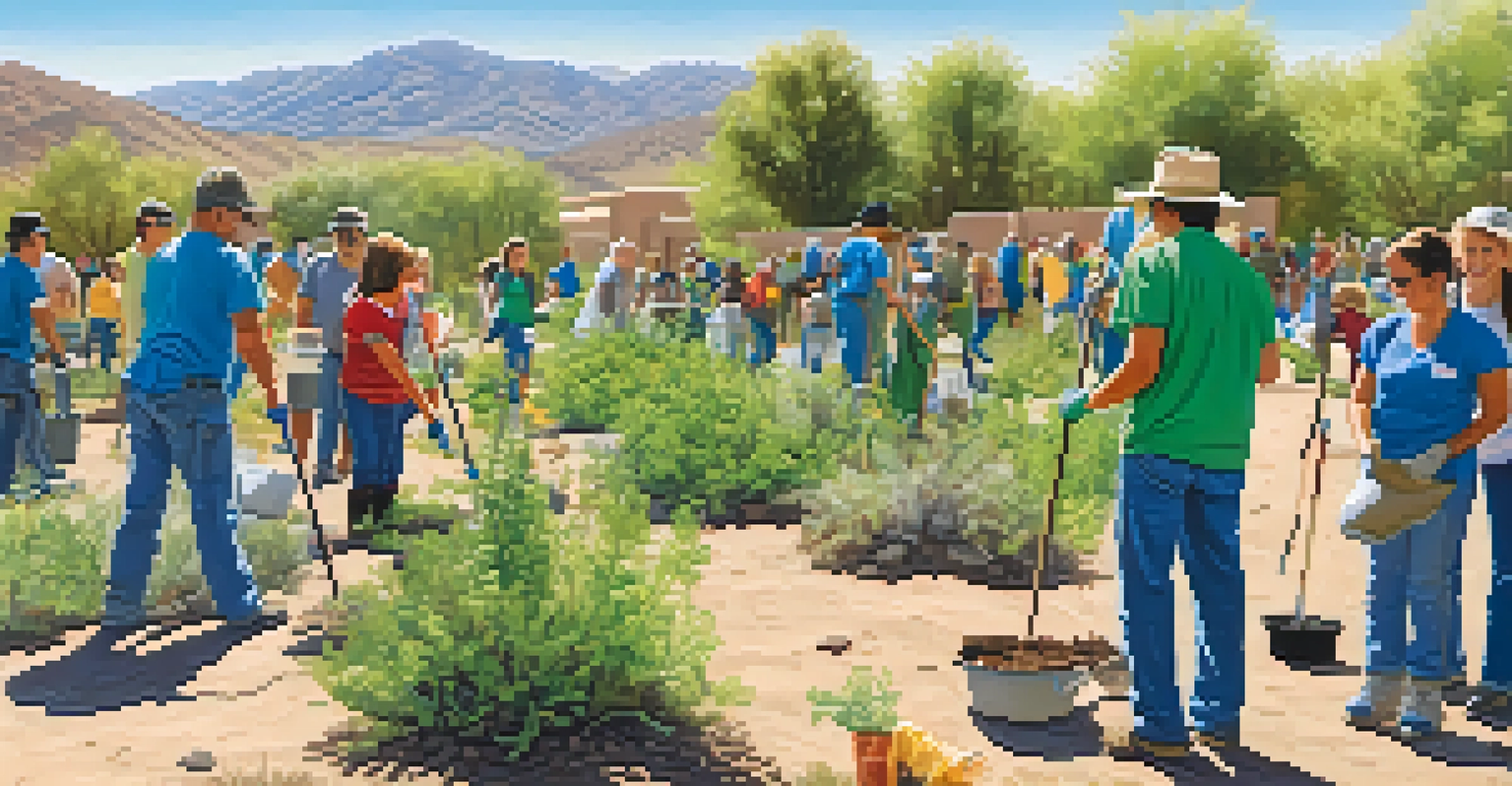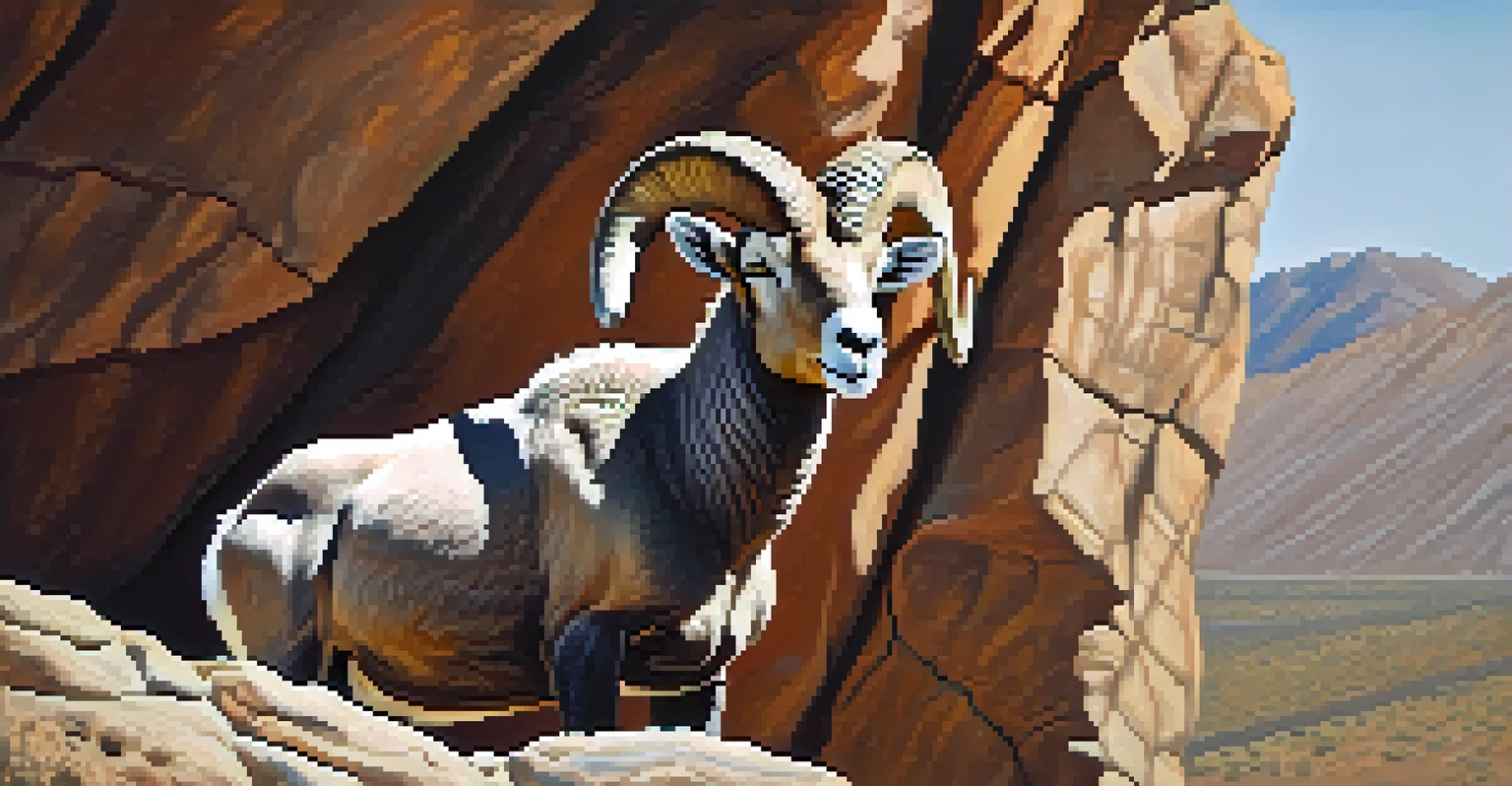Community Involvement in Nevada's Wildlife Conservation Efforts

Understanding Nevada's Unique Wildlife and Ecosystems
Nevada is home to a diverse range of wildlife, from desert tortoises to bighorn sheep. This diversity is not only crucial for the state's ecosystem but also for its cultural heritage. Understanding these species and their habitats is the first step toward effective conservation efforts.
In every community, there is work to be done. In every nation, there are wounds to heal. In every heart, there is the power to do it.
The state’s unique ecosystems, such as the Great Basin and Mojave Desert, each host specific wildlife that relies on them for survival. These ecosystems face challenges like habitat loss and climate change, making community involvement even more critical in addressing these issues.
By educating themselves about local wildlife, community members can contribute to preservation efforts and foster a deeper appreciation for nature. Knowledge about Nevada's ecosystems can empower residents to take action and advocate for wildlife conservation.
The Role of Local Communities in Conservation
Local communities are at the heart of conservation efforts in Nevada. Engaging citizens in wildlife protection not only creates a sense of responsibility but also strengthens community bonds. When individuals come together for a common cause, the impact can be profound.

Community-driven initiatives, such as clean-up days and habitat restoration projects, showcase how collective action can lead to tangible results. These activities not only benefit local wildlife but also enhance the quality of life for residents by promoting cleaner environments.
Community Participation is Key
Local communities play a crucial role in conservation efforts, fostering responsibility and creating a collective impact.
Moreover, community involvement often leads to increased funding and resources for conservation projects. When people work together, they can apply for grants and seek donations that might not be available to single entities or organizations.
Educational Programs Promoting Wildlife Awareness
Educational programs play a pivotal role in fostering a culture of conservation in Nevada. Schools, nonprofits, and local governments often collaborate to create workshops that teach residents about local wildlife and ecological principles. These programs are designed to be engaging and accessible for all ages.
The greatest threat to our planet is the belief that someone else will save it.
For example, hands-on activities like nature walks or wildlife monitoring projects provide practical experiences that deepen understanding. When community members see wildlife in their natural habitats, they often become passionate advocates for conservation efforts.
By equipping individuals with knowledge, these educational initiatives inspire action. People who understand the importance of biodiversity are more likely to support policies and practices that protect wildlife.
Volunteer Opportunities for Conservation Enthusiasts
Volunteering is a fantastic way for Nevadans to contribute to wildlife conservation directly. Organizations across the state offer various opportunities, from trail maintenance to species monitoring. These activities allow volunteers to get hands-on experience while helping to protect Nevada's precious ecosystems.
One popular volunteer initiative involves participating in wildlife surveys, where residents help track animal populations and health. This data is crucial for state wildlife agencies to make informed decisions about conservation strategies.
Education Drives Conservation Action
Educational programs empower residents with knowledge about local wildlife, inspiring them to advocate for conservation.
Moreover, volunteering fosters a sense of community and shared purpose. When people come together for a common goal, like protecting local wildlife, it creates lasting connections and a supportive network of conservation advocates.
Partnerships Between Communities and Conservation Groups
Collaboration between local communities and conservation organizations is essential for effective wildlife management. These partnerships leverage resources, knowledge, and manpower, allowing for a more significant impact. When communities unite with experts, they can tackle conservation challenges more efficiently.
For instance, many conservation groups in Nevada work closely with community members to develop sustainable practices. This collaboration ensures that local insights are incorporated into conservation strategies, making them more effective and accepted by the community.
Additionally, these partnerships can lead to innovative solutions for wildlife protection. When diverse perspectives come together, they often spark creative ideas that can enhance conservation efforts.
Success Stories of Community-Led Conservation
Across Nevada, there are numerous success stories highlighting the power of community-led conservation. For example, the restoration of wetlands in the Lahontan Valley involved local volunteers who dedicated their time and effort to rehabilitate the area. Their hard work not only improved habitat for local wildlife but also revitalized the community spirit.
Another inspiring example is the community-driven efforts to protect the desert tortoise. Residents have organized educational campaigns and habitat restoration projects that have significantly contributed to the species’ recovery. These initiatives demonstrate how local actions can lead to meaningful change.
Collaborative Efforts Yield Success
Partnerships between communities and conservation groups enhance the effectiveness of wildlife management strategies.
These success stories serve as powerful reminders that everyone can make a difference. When communities unite for a common cause, they can achieve remarkable outcomes that benefit both wildlife and future generations.
Challenges Facing Community Involvement in Conservation
Despite the positive impact of community involvement, several challenges hinder conservation efforts in Nevada. Limited funding and resources can restrict the scope of projects, making it difficult for communities to implement their conservation ideas. Additionally, a lack of awareness about wildlife issues can prevent residents from participating.
Moreover, time constraints often pose a challenge for potential volunteers. Many community members juggle work, family, and personal commitments, leaving little time for conservation activities. Finding ways to make volunteering more flexible and accessible is essential to overcome this barrier.

Addressing these challenges requires ongoing support and education from both conservation organizations and community leaders. By working together, they can create a more robust framework for community involvement in wildlife conservation.
Looking Ahead: The Future of Wildlife Conservation in Nevada
The future of wildlife conservation in Nevada looks promising, thanks in part to the continued involvement of local communities. As awareness of ecological issues grows, more residents are stepping up to advocate for their natural surroundings. This trend is encouraging and vital for the health of Nevada's ecosystems.
Innovative approaches, such as integrating technology into conservation efforts, are also gaining traction. Community members can leverage tools like social media to raise awareness and mobilize support for wildlife protection initiatives.
Ultimately, the future of Nevada's wildlife depends on the ongoing collaboration between communities, conservation organizations, and government agencies. Together, they can forge a path toward sustainable conservation that ensures the protection of the state's unique wildlife for generations to come.